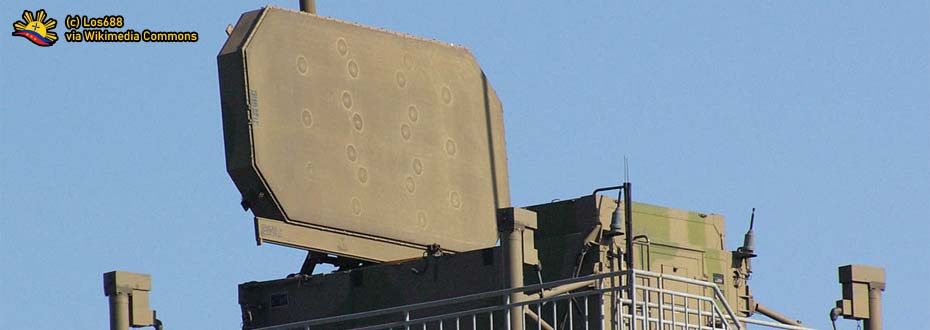 |
| Defense budgeting is a lifeline that ensures the materialization of the Revised AFP Modernization. |
Philippine defense topics of contemporary times usually cover recent updates relating to the ongoing Revised AFP Modernization Program, where the crowd of defense enthusiasts talking to social media usually talks about the essence of securing military hardware of various types to ensure the security and deterrence of the country’s national sovereignty and interest against both domestic and foreign threats, particularly on the projects pushed by all three (3) branches of the Armed Forces of the Philippines.
But all of that talk has an underlying factor that can define or break this defense modernization momentum, one that requires understanding it as this factor plays a big and fully significant role to making sure that the materialization of an acquisition project gets fulfilled, along to its component that ensures its continuous operational, maintenance, and repair requirements throughout its length of active service within the necessities of the Philippine Military.
This factor refers to the aspect of budgeting itself, specifically the very function of government budgeting in relation to how annual appropriations get passed and how the entire defense sector secures a portion of the entire government’s budget allotments, with details added to it as to the quantity of that budgetary pie went to the Revised AFP Modernization Program. The increase and decrease in allocation to the defense sector define how the planners proceed with their respective acquisition projects.
Getting a full discussion on the functionality of the Philippine defense budgetary trends is something that is not founded on, at least not until this article comes in to point out the needed statistical data to provide the full picture of how things came to the overall trends of the defense allotments and the expenditure that always came with it. Add also to that the budgetary technicalities that an average person found to be complex and incomprehensible until an understandable reason gets explained.
Add to this are the pressures provided by the country’s key ally, especially with the United States government under the administration of Donald Trump, where the alliances should have committed at least 2% to 5% of their respective Gross Domestic Product or GDP output to finance their respective defense programs and upkeep. With the figure provided, this writeup aims to provide additional understanding of the statistical data relating to the country’s national defense spending annually.
In its first of a multiple series that will release on this website in the upcoming years, the information provided will give full insight to the budgetary trends relating to the Philippine defense spending, especially in relation to its annual reports of its Gross Domestic Product, in this case spanning three (3) years from year 2019 to 2021. The succeeding years will have its own entry, and the previous years before 2019 have insufficient data to make it into this discussion as of this time of publishing.
AT A GLANCE
 |
Here is the statistical data originating from reliable sources.
Click the table to enlarge. |
For this discussion, as the title itself suggests, will encompass Philippine defense budgetary allotments encompassing three (3) years, although the other years, particularly the latter ones, will come as a separate topic to ensure that each content will come manageable to delve on, as the details on each fiscal year’s expenditure per service branch and other services within the Department of National Defense will also come as part of the entire presentation.
As the topics covered three (3) years from 2019 to 2021, the details will come with a comparative data presentation, which at a glance, is present as statistical information provided in the table displayed above.
The parameters presented are as follows: the years covered in this scope and the allotments presented under the Department of National Defense, including agencies outside the Armed Forces of the Philippines. Added to it is the budget for the Revised AFP Modernization Program, plus under ‘Un-programmed’ column.
Another set of parameters presented in the table above includes the overall Gross Domestic Product or GDP that the Republic of the Philippines produced from 2019 to 2021, both in dollar and peso denomination, with the latter having a calculated average for foreign exchange being a reliable parameter for calculations.
Completing the table presented here will go as the percentage (%) of the defense budget to the country’s annual GDP, giving a picture of its trend with the presented three (3) years as a parameter.
At a glance, as this section intends to be, presents a promising prospect to the overall budgetary presentation that the Department of National Defense has as to the respect to the annual Gross Domestic Product that the Republic of the Philippines have as its output for the said three (3) years. In 2019, the total defense budget comes at around Php 186.222 billion, with the percentage of the GDP being around 0.95%. The gross domestic product, or GDP, for the year 2019 is at around Php 19.507 trillion.
In the year 2020, the budget presented as part of the Department of National Defense’s own expenditure for the year totals at around Php 196.744 billion, an increase of around Php 10.5 billion compared to the previous year.
That also reflects its increase, respectful to the annual Gross Domestic Product of the country, whereby the latter, amounting to Php 17.355 trillion, comprises around 1.13% of the entire GDP. The percentage clearly breaches the 1% share, as opposed to the previous year’s percentage.
Finally, the figures in 2021 give a slight shrinkage in the defense spending percentage to the GDP, although the shrinkage is only small at around 1.11%. Still, the budget of the Department of National Defense for the year still saw an increase to around Php 216.471 Billion, of which the Revised AFP Modernization Program also saw an increase for the first time as opposed to the constant Php 25 Billion and Php 5 Billion on both programmed and un-programmed appropriations, respectively, totalling Php 30 Billion.
While the figures presented on the table can only provide much insight on the overall Philippine defense budget that spans three (3) years, as mentioned, the following details will delve deeper to the breakdown of each object of expenditures that the Department of National Defense have in this presentation, ranging from the respective budget of all three (3) service branches of the Armed Forces of the Philippines, down to the three (3) budget clusters - PS, MOOE, and CO.
PHILIPPINE DEFENSE BUDGET - FY 2019
 |
The overall breakdown of the Philippine defense budget under the
2019 General Appropriations Act.
Image Source. |
On the table presented above, the Department of National Defense presents a budget amounting to Php 186.222 billion under the 2019 General Appropriations Act, with the Armed Forces of the Philippines getting the huge portion of the defense budget pie, at around Php 180.398 billion.
The agency that got the second place in the largest portion of the 2019 defense budget is the Veterans Memorial Medical Center, with a budget of around Php 1.866 billion, followed by the Office of Civil Defense, which has around Php 1.3 billion.
Breaking it down to the service branches under this period, the Philippine Army received the largest pie with the total budget amounting to Php 91.407 billion, followed by the Philippine Navy, where its budget comes at around Php 27.842 billion.
Finally, the Philippine Air Force amounts to around Php 24.584 billion. The amounts under Capital Outlay also come with a similar ranking, with Php 3.515 billion, Php 1.252 billion, and Php 352 million distributed accordingly among the three branches, in that order.
The largest portion of the Armed Forces of the Philippines’ budget under this fiscal period goes to the expenditures that fall under the Personnel Services or PS cluster, of which the budget goes to the salary, benefits, and pension of both active and retired personnel that belong to the Philippine military.
The breakdown is the following allotments: Php 74.488 billion for the Philippine Army, Php 19.334 billion to the Philippine Navy, Php 14.743 billion for the Philippine Air Force, and Php 5.740 billion for the AFP-GHQ.
For the Revised AFP Modernization Program, this line item falls under the Capital Outlay portion of the General Headquarters, AFP and AFP-wide Service Support Units or AFPWSSUS, with that allotment keeping the fixed amount of Php 25 Billion, without the usual Php 5 Billion allotment for the program lined under the ‘Un-programmed Appropriations’ portion of this fiscal year’s General Appropriations Act that the succeeding years have, provided on the table above.
Continuing to the budget breakdown for the fiscal year 2019, the Armed Forces of the Philippines’ budget for Maintenance and Other Operating Expenses or MOOE has a sum of Php 35,732,408,000.00 with the Philippine Army having the largest pie at Php 13.402 billion, followed by the Philippine Air Force with the budget of around Php 9.488 Billion allotted for this cluster. Completing the list is the Philippine Navy with a budget of Php 7.255 billion, and AFP-GHQ with a budget of around Php 5.587 billion.
The year 2019 will be the period where the Philippine defense budget in total equates to 0.95% of the said fiscal period’s Gross Domestic Product as reported by the World Bank’s own official data, where the figures provided for the year is at around US$376.820 Billion, or Php 19.507 Trillion based on the said year’s average foreign exchange rate. As provided on the table ‘at a glance’, the Philippines’ defense budget will breach the 1% threshold in the succeeding year.
At the turn of the decade comes its new set of figures and relevant budgetary data earmarked for the Philippine defense expenditure purposes, although several of its output might have a minor pushback given that an unexpected turn of events, namely a medical health emergency that struck the world economy, contracting each country’s economic output with that period. Despite this, the following year provided its statistical data for comparative purposes as part of this topic.
PHILIPPINE DEFENSE BUDGET - FY 2020
 |
The overall breakdown of the Philippine defense budget under the
2020 General Appropriations Act.
Image Source. |
Coming at 1.13% total rate compared to the country’s overall Gross Domestic Product at the period at Php 17.355 Trillion, the overall Philippine defense budget expenditure breached the 1% of the Gross Domestic Product share percentage, which might seem signifying relating to the growth of the share of the defense expenditure to the overall economic output for the year. However, deep details regarding this explanation entail the reason relating to this achievement.
During the year, an unexpected global event took place, where a global pandemic got triggered because of the spread of the COVID-19 coronavirus, resulting in a series of enforced lockdowns that have rendered the global economy to a standstill.
Because of this, the Philippine economy contracted a bit, of which compared to the 2019 Gross Domestic Product of Php 19.507 trillion, the country’s output in 2020 lowered significantly at around Php 17.355 trillion.
Still, the overall Philippine defense budget in 2020 still saw significant growth, with the allotment presented under the General Appropriations Act ending up having a total figure of Php 191.744 billion, higher than 2019’s Php 186.222 billion budget.
Also, compared to the defense budget in 2019, the allotments for the Revised AFP Modernization Program under the un-programmed appropriations appeared, with the amount totaling Php 5 billion, while the programmed budget remained at Php 25 billion.
Going to the specifics, the Php 191.744 billion defense budget breaks down into the following details as discussed in the following sentences. Personnel Services or PS allotments for personnel basic salary and benefits have the largest pie of the budget at Php 119.716 Billion, trailing next is the Maintenance and Other Operating Expenses at Php 41.340 Billion, and Capital Outlay, which includes the allotment for the Revised AFP Modernization Program, at Php 30.686 Billion.
On the presented breakdown, the allotment provided for the Armed Forces are as follows - Php 118.110 Billion for the Personnel Services or salaries and benefits for both uniform and civilian personnel of the agency, Php 37.693 Billion for the Maintenance and Other Operating Expenses or for upkeep of both military equipment and military facilities, Php 19 Million for Financial Services, and Php 30.201 Billion for Capital Outlay, with Php 25 Billion Revised AFP Modernization Program budget included in the figure.
Now talking to the breakdown among service branches of the Armed Forces of the Philippines under the 2020 General Appropriations Act, the one that receives the largest pie of allotments is the Philippine Army, amounting to Php 92.508 Billion, followed by the Philippine Navy at Php 29.054 Billion, and last is the Philippine Air Force at Php 26.436 Billion. The budget under the AFP-General Headquarters and AFP Wide Service Support Units (including the RAFPMP allotment) is at around Php 38.005 billion.
The next part will complete the three (3) year comparison of defense expenditures that the Republic of the Philippines have from 2019 to 2021, with the latter getting a boost for its budget for the Revised AFP Modernization Program for the first time on both programmed and un-programmed appropriations.
As presented at a glance, the trend of the annual Philippine defense budget comes at a constantly increasing pace, with the 2021 budget surpassing Php 200 billion for the first time.
PHILIPPINE DEFENSE BUDGET - FY 2021
 |
The overall breakdown of the Philippine defense budget under the
2021 General Appropriations Act.
Image Source. |
Coming at 1.11% of the Gross Domestic Product for the year, the Philippine defense budget saw a bit dipping share compared to the output amounting to Php 19.419 Trillion, but the overall defense budget trend still saw a significant increase, specifically to the allotments intended to the Revised AFP Modernization Program, as it is a first time for this program to have an appreciable amount as compared to the constant Php 25 Billion allotment that came before this fiscal year.
Speaking of that first time, the Revised AFP Modernization Program under the 2021 General Appropriations Act received at least Php 27 billion, a boost of at least Php 2 billion from the original allotments provided in the prior two (2) years within this discussion’s own parameter.
Likewise, the allotments provided under the un-programmed appropriations for the Revised AFP Modernization Program also received their own increase, which is at Php 11 billion, or Php 6 billion higher than what is usually given.
This is also the year that the Philippine defense budget breached the Php 200 billion mark, whereby the allotments presented in the 2021 General Appropriations Act have at least Php 205.471 billion, as compared to the Php 191.744 billion allotments set aside for this sector under the 2020 General Appropriations Act.
The increase reflects the increasing budgetary requirements of the Department of National Defense, specifically the Armed Forces of the Philippines’ operational, maintenance, and repair (MRO) requirements.
Going on the breakdown, a huge chunk of it, at least amounting to Php 199.415 billion, goes to the Armed Forces of the Philippines, with Php 97.625 billion of the allotment going to the Philippine Army. Both the Philippine Navy and the Philippine Air Force both have a respective share of the pie amounting to Php 30.203 billion and Php 31.552 billion, with the remaining part of the budget went to the AFP-Wide Service Support Units, with its total allotment of Php 40.034 billion.
The portion of the Php 40.034 billion allotted under the AFP-Wide Service Support Units is the Php 27 billion allotted for the Revised AFP Modernization Program, which received its increase as mentioned throughout this discussion.
It also forms the largest share for this portion under the General Headquarters of the AFP under the Capital Outlay cluster, while the remaining cluster has at least Php 6.445 billion for Personnel Services, and Php 6.128 billion for Maintenance and Other Operating Expenses.
As expected, the largest share of the budget for all three (3) branches of the Armed Forces of the Philippines is for the Personnel Services or for the salaries and benefits of the personnel that have served in each of the branches, with the Philippine Army receiving Php 79.173 billion, the Philippine Air Force receiving Php 15.100 billion, and the Philippine Navy receiving Php 20.916 billion. The branches’ MOOE comes at around Php 15.787 billion, Php 14.899 billion, and Php 9.168 billion, respectively.
Now that the discussion of the breakdown of budgetary allotments for the Philippine defense from 2019 to 2021 fully presented, the next part of this discussion will be more theoretical in its tone, as the main highlight focuses more on the projected budgetary output for the Philippine defense, especially if the said years, based on the annual Gross Domestic Product, received at least 2% of the said economic parameter, and its effect to the Philippine defense programs, based on the prices of current military purchases.
THEORETICAL PROJECTIONS
 |
| The Philippine defense budget in this scenario ranges between Php 300 billion to almost Php 1 trillion for its defense expenditures if given the 2-5% GDP projections. |
Now that the Philippine defense budgetary statistics with data from 2019 to 2021 as a parameter and the General Appropriations Act of the said fiscal periods being the basis for providing the actual percentage of the defense budget of the country compared to the Gross Domestic Product, this portion will delve on the theoretical realm of possibilities, notably on the scenario if the Philippine defense allotments comprise at least 2% or 5% of the Gross Domestic Product as the primary basis.
Based on the data provided above, the defense expenditures based on the 2% and 5% of the Gross Domestic Product comes higher, perhaps even twofold compared to the budget presented for the entire Department of National Defense from 2019 to 2021, and even 200 times to 300 times larger to what has allotted to the Revised AFP Modernization Program presented on the said three years, as the figure comes limited always at around Php 25 billion to Php 30 billion per annum at an average.
For the year 2019 as an example, the 2% share of the Gross Domestic Product that have set aside for defense based on the figures on the table above comes at around Php 390.141 billion, which is 2 times higher than the actual figure for the budget under the Department of National Defense amounting to Php 186.222 billion.
Likewise, the 5% defense expenditure share in this scenario will render the Philippine defense budget an amount of Php 975.352 billion, a Php 25 billion difference from securing the Php 1 trillion mark.
Meanwhile, the defense expenditure figures for 2020, following the parameters, will give the Philippine defense budget allocations an increase of around Php 358.911 billion for the 2% share basis, and Php 897.277 billion for the 5% share basis. As usual, the actual budget under the 2020 General Appropriations Act for the Department of National Defense amounts to Php 196.744 billion, although the dip in the amounts in the theoretical scenario is noticeable given the global health concern throughout the year.
In the year 2021, the figures presented themselves as Php 388.380 billion for the 2% share of the Gross Domestic Product provided for Philippine defense expenditure in this theoretical scenario, and Php 970.951 billion for the 5% share, which are still lower than the 2019 figures presented as this said year comes as the country and the entire world still recovered from the global health concern that have occurred a year prior. Still, the figures presented are higher than the actual Php 216.471 billion budgetary figure.
The figures presented, as provided in this theoretical output, might give the Armed Forces of the Philippines an opportunity to improve its firepower and external defense-related projects, plans, and programs at a hyper-drive, as this enable each of the service branch of the Philippine military further increase the numbers of needed hardware purchased under both Horizon 2 and 3 phases of the Revised AFP Modernization Program, while improving existing facilities and building new ones to shelter the newly purchased capability.
Given the figures under this presentation, this will enable the Department of National Defense and the Armed Forces of the Philippines to quickly building up not only its big ticket acquisition projects of military hardware intended for addressing both domestic and foreign territorial defense related threats, but also to give opportunity to expand and improve its existing facilities, all in which going in line with its long-term plans, as this will come useful for the country to exercise its national interest in succeeding years to come.
IN CONCLUSION
 |
The bicameral legislature has the final say on budgetary matters, including defense.
Pitz Defense Analysis file image. |
The discussion as presented here is the full picture of the Philippine defense budgetary expenditures that have taken place within the said three (3) years as mentioned, which is from 2019 to 2021.
This also means that there will be more of this to come as part of the growing topics to delve into regarding the broader scope of the functionalities of the Philippine defense topics, going beyond the usual talks on the recent military hardware that the Armed Forces of the Philippines is keen into buying on.
Discussing the budget that runs Philippine defense is really important to delve into, especially on the numbers that are running the actual expenditures presented by the executive branch of the government through the
DBCC or the Development Budget Coordination Committee, which presents the proposed budget for the succeeding fiscal year before the bicameral plenaries of both the House of Representatives and Senate before it becomes the official General Appropriations Act for the year.
The defense spending for the said three (3) years in this discussion presented to be just limited to just 1% of the GDP or the Gross Domestic Product, which is a given for the government budget that always focuses on more pressing expenditures relating to social services such as additional infrastructures for connecting communities and making lives easier, or on education where it gives opportunity to the population to be more productive citizens as they prepare to be part of the country’s economy.
One keynote to point out is that the countries that the Philippines has a strong alliance with, like the United States, has a current policy that pushes its alliances to have a defense expenditure of
at least two percent (2%) of the Gross Domestic Product, and since then have increased further to
as high as five (5%) of the Gross Domestic Product that a country has produced in a fiscal period. Of course, there is a likelihood that the Philippines will not adhere to this scheme, citing its budget also allotted to other matters as mentioned.
Should the Philippines follow the increase of getting its defense spending to at least two percent (2%) or five percent (5)% of the Gross Domestic Product, there is a clear indicator that the Armed Forces of the Philippines can accomplish most of its acquisition objectives under the Revised AFP Modernization Program, specifically on both the Horizon 2 and the Re-Horizoned 3 timelines that its implementation phase might have gotten shorter than the current financial situation that all three military branches are dealing.
With the Php 2 trillion ten-year based Re-Horizon 3 now rolling, the increase of allocation on the defense spending clearly provides a large difference on its overall output, specifically on the timeline of accomplishing key acquisition projects and even getting several piecemeal projects like the acquisition of the
Miguel Malvar-class frigate under the Corvette Acquisition Project accomplished by getting more than a pair of ships in one go, or even
getting this F-16 Viper full package with ease.
In the long run, the Armed Forces of the Philippines might get the capability it needs under the Comprehensive Archipelagic Defense Concept or CADC, although the presented increase in this theoretical budget might have accomplished this concept sooner.
Still, getting the projects realized depends on the country’s key policymakers, as the increasing tension in the Indo-Pacific region suffices as justification for an increase in defense spending, especially for a country like the Philippines that ensures its national interest.


























